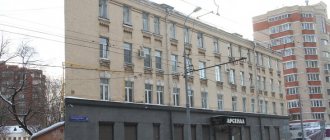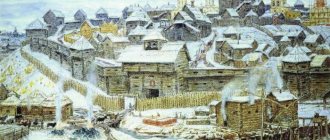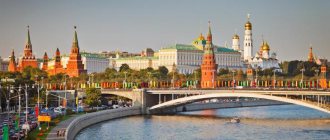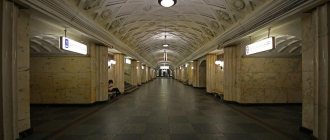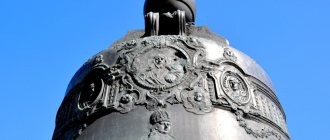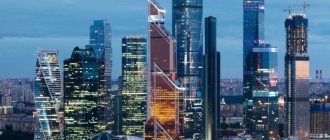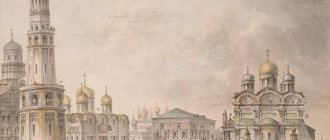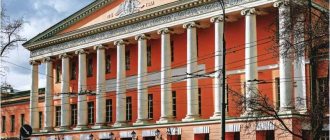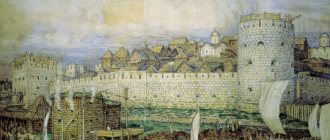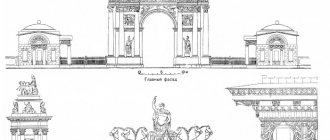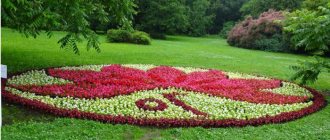Over 2.5 billion trips
Photo: Moscow 24/Evgenia Smolyanskaya
The Moscow Metro is the largest transport network in Russia and one of the largest in the world. The subway worked continuously, even in the most difficult times. And periodically she sets her own records.
For example, in 2021, passengers made over 2.5 billion trips in the Moscow metro. Just think about this figure! In addition, the Moscow metro ranks first in the world among other metro systems in terms of schedule accuracy.
Since 2011: “brotherhood” of rings
Nowadays, the subway comes to the most remote areas, making life much easier for Muscovites. Over the past six years, metro has appeared in Brateevo, Orekhovo-Borisovo, Troparevo, as well as in the Novokosino, Vykhino-Zhulebino districts located outside the Moscow Ring Road, and in the territories annexed to Moscow. Old areas are not left unattended either. In September 2021, three stations were opened in the north and northeast: Butyrskaya, Fonvizinskaya and Petrovsko-Razumovskaya. In March 2017, three stations - Minskaya, Lomonosovsky Prospekt, Ramenki - made it easier for residents of the west of Moscow to move around the city. In addition, many interchanges have appeared outside the Circle Line: Zyablikovo, Delovoy, Bitsevsky Park, Petrovsko-Razumovskaya. They help optimize traffic flows and enable Muscovites to travel without going through the center.
A striking event in the life of the city was the launch in 2021 of the Moscow Central Circle - an urban railway integrated into the structure of the metro. 31 stations located on the line allow citizens to quickly change trains, bypassing the center.
Today the metro continues to spread throughout the capital. In less than the last seven years, Moscow has opened for passenger traffic, including the MCC, 55 stations and 101 kilometers of lines - much more than in any other period of metro construction. With the commissioning of the first five stations of the Third Interchange Circuit, this will already be 111.5 kilometers and 60 stations.
The construction of the Rechnoy Vokzal - Khovrino, Ramenki - Rasskazovka and Petrovsko-Razumovskaya - Seligerskaya sections is also nearing completion. In 2021, a new Kozhukhovskaya line with a length of 17.5 kilometers will be opened, in 2019 the red line will be extended to Stolbov, and in 2020-2021, traffic will be launched along the entire Third Interchange Circuit, the length of which will be about 65 kilometers.
In just 10 years, from 2011 to 2021, about 200 kilometers of lines will be laid in Moscow and over 100 metro stations will be opened, including the MCC. Approximately the same amount was built from 1965 to 2010, that is, in 45 years.
Photos courtesy of the Moscow Main Archive
Voices of the metro
Photo: Moscow 24/Anton Velikzhanin
The most interesting facts are those that you come across every day, but never think about them. One of these is the voices that announce subway stops. If you drive along a branch from end to end, the voice acting will change - from male to female.
This decision was made to guide blind and visually impaired passengers. A male voice announces stations when moving towards the center, a female voice - towards the region. On the Ring Road, the system works differently: a male voice calls stations when moving clockwise, a female voice in the opposite direction.
By the way, the voices you hear every day belong to Yulia Romanova-Kutina and Alexei Rossoshansky. Announcements in English were recorded by announcers Svetlana Ekimenko and Pavel Novichkov.
Guardian cats and a building with a tower
Participants of the night excursion gather at the Izmailovskaya station. Guests are divided into three groups of strictly 10 people. This is the reality of COVID-19. We are heading towards the Izmailovo depot, one of the oldest in the capital.
In the winter darkness it is difficult to see the main decoration of the building - a small clock tower. This is another reminder of the era - the depot was opened in 1950, it became the third in Moscow. Today the depot serves the longest metro line, Arbatsko-Pokrovskaya. Its length is more than 45 kilometers.
“The Izmailovo depot is notable for the fact that it is the only depot that has serviced almost all types of cars that have existed throughout the history of the Moscow metro, except for the most recent ones - cars of the 760/761 series Oka, Moskva and Moscow-2020 “,” says the chief specialist of the excursion bureau “Metrotour” of the career guidance center of the Moscow Metro, Yegor K.
We go into the spacious hangar - the nave, as the employees call it. There is a small exhibition of rare trains that have already been taken out of service. From behind the carriages, cats - local residents - are watching the guests. This is an interesting feature of the capital’s depots: entire cat families live in them. Back in the 1950s, pets were brought in to protect premises from rodents. And the animals living in Izmailovo today are direct descendants of those cats.
The next hangar serves the main rolling stock - mainly Rusich type cars running on the blue line. The depot is designed for 22 full trains of five two-section cars (at maximum load). Here, trains are inspected after a shift, maintained, and, if necessary, repaired. At a small wash, the trains “take a shower”: the cars slowly pass through a special box with fixed brushes.
By the way, not all trains arrive at the depot overnight. Most trains “sleep” right at stations or in turnaround cul-de-sacs.
Metro in numbers
Photo: portal of the mayor and government of Moscow/Maxim Mishin
The metro looks no less interesting in numbers. The capital's subway has 15 metro lines, 780 kilometers long, and 333 stations, including the metro, MCC, MMTS, and MCD.
The metro also has 370 lobbies, 20 depots, more than 6 thousand train cars, 3.7 thousand turnstiles, 5.7 thousand traffic lights, 900 escalators with a total length of 37 kilometers and 14 thousand surveillance cameras.
More than 12.5 thousand trains pass through the subway per day. On them, Muscovites and guests of the capital make more than 9.5 million trips on weekdays, including the MCC and MCD.
1991–2000: the first stations of the new country
During the turbulent 1990s, metro construction declined sharply. Nevertheless, projects launched before the collapse of the USSR were completed. From 1991 to 1994, the northern section of the Serpukhovsko-Timiryazevskaya line from Savelovskaya to Altufev was opened. In 1995–1999, after a long period of construction, the Lyublinskaya line was launched from Chkalovskaya to Maryino. In August 2000, Academician Yangel Street opened on the Serpukhovsko-Timiryazevskaya line.
During this difficult decade, there was almost no money in the state treasury, so the metro had to build many stations at its own expense. But despite the difficult financial situation, their design looks quite decent.
During the last decade of the last century, the subway expanded to 32.8 kilometers and 19 stations.
Dubbing
Photo: Moscow 24/Alexander Avilov
Two “Arbat” and two “Smolensk” stations on the Arbatsko-Pokrovskaya and Filevskaya lines hardly surprise anyone. Although in reality this choice of names seems strange. But everything, like this fact, has a story.
"Arbatskaya" and "Smolenskaya", which now belong to the Filevskaya line, were built in 1935. During the Great Patriotic War, near Smolenskaya, a bomb broke through the ceiling of the tunnel, fell inside, but did not explode. The ceiling was patched, but the incident was taken into account.
After the war, with the beginning of the era of nuclear weapons, the metro began to be considered as a bomb shelter in case of a nuclear war. They decided to duplicate the old lines with a deep tunnel. So in the early 50s the Arbatskaya, Smolenskaya and Kyiv stations of the Arbatsko-Pokrovskaya line appeared.
However, later the Filyovskaya line stations were also “reactivated” for the sake of subway construction in residential areas. So “Arbatskiye” and “Smolenskiye” became two each, and as many as three stations bear the name “Kyiv”.
1951–1960: from luxury to simplicity
After the war, construction began on the fourth stage of the metro - the Circle and Arbat lines. The work was completed in the 1950s.
Initially, the Koltsevaya was supposed to pass under the Garden Ring, but then the designers decided to run the line through the station squares. On January 1, 1950, the first section opened - from Park Kultury to Kurskaya. He passed just under the Garden Ring. On January 30, 1952, the second section was launched - from Kurskaya to Belorusskaya. The ring closed on March 14, 1954, when trains ran from Belorusskaya to Park Kultury. The Circle Line became the apotheosis of the Stalinist Empire style. All 12 stations are decorated with sculptures, monumental paintings, and original lamps. Moreover, each of them is individual and unique.
The construction of the Arbat Line coincided with the beginning of the Cold War. Until 1952, the new line was not mentioned in the press, since in the event of a nuclear threat these stations were supposed to become bomb shelters.
In 1955, the government decided to "eliminate excesses in design and construction." Stations began to be built not according to individual, but standard designs. As a result, VSHV (today VDNH), Sportivnaya and others looked simpler compared to their predecessors. The first ground stations appeared (“Studencheskaya”, “Kutuzovskaya” and “Fili”), the construction of which was more economical. The pursuit of cheapness led to the fact that during the construction of the Luzhnetsky metro bridge with the Leninskiye Gory station (today Vorobyovy Gory) mistakes were made, and it quickly fell into disrepair.
In total, 33.5 kilometers of lines and 21 stations were built in 1951–1960.
The construction of the metro was invented by worms
Photo: portal of the mayor and government of Moscow/Maxim Mishin
In the distant 30s, the construction of subway tunnels caused much more problems than today: the first stations were built by hand - with a pick and shovel. Today, metro builders' efforts are saved by advanced technologies. To lay tunnels, a fully automated, heavy-duty structure called a “boring shield” is used.
Have you already guessed what worms have to do with it? According to legend, the inventor of the world’s first “mining shield,” the Englishman Mark Brunel, came up with such a design after taking a closer look at the “work” of an ordinary ship worm. Burunel noticed that the head of the mollusk was covered with a hard shell with jagged edges. With its help, the worm drilled into the tree, leaving behind a smooth protective layer of lime on the walls of the passage. The idea turned into a design in 1817, and already in 1825, with the help of the first “shield” model, construction began on a tunnel under the Thames River in England.
By the way, Moscow builders were the first in the world to build inclined tunnels for escalator areas using tunnel-boring shields. A special complex was developed in Canada by order of Mosmetrostroy. With its help, shield tunneling for escalators was carried out for the first time - at the Maryina Roshcha station on the Lyublinsko-Dmitrovskaya metro line.
1981–1990: metro gift exchange
The end of the 1970s - the beginning of the 1980s - this period became the most productive in the construction of the metro. In 1983, the Serpukhovskaya line with eight stations was put into operation - from Serpukhovskaya to Yuzhnaya.
In 1985, the capital's subway was replenished with a station of Czechoslovak metro builders. While architects and engineers of a friendly country were building Prazhskaya, Soviet designers were building the Moskovskaya station in Prague.
Perestroika struck, and the pace of subway construction slowed down. From 1985 to 1988, builders commissioned three stations annually. In 1989, only one was opened - “Krylatskoye” on the Filyovskaya line. In 1990 - four: "Yasenevo" and "Bitsevsky Park" (today - "Novoyasenevskaya") of the Kaluzhsko-Rizhskaya line, as well as "Cherkizovskaya" and "Ulitsa Podbelskogo" (today - "Rokossovsky Boulevard") of the Kirovsko-Frunzenskaya (now — Sokolnicheskaya) line.
In total, in the 1980s, 46.5 kilometers of track were laid and 28 stations were opened.
"Refrigerators" in the metro
Photo: Moscow 24/Vladimir Yarotsky
Another interesting fact from the construction of the subway. In Moscow, which is crossed everywhere by rivers, canals and various creeks, the most common problem for laying metro tunnels has become quicksand - masses of almost dusty sand mixed with 10-15% clay, saturated with water.
And the easiest way to deal with them was invented back in the last century during the construction of the first metro lines in Moscow. This is ground freezing. There are several ways – we’ll tell you about the oldest one.
It is also called “pickle”. The soil around the work site is frozen using special refrigeration machines. Using special pipes placed in problem soil, they create circulation of a non-freezing working brine of calcium chloride. After about a month of work by the “underground refrigerators,” the soil freezes into a monolithic mass, which protects the work site from the penetration of groundwater and the collapse of tunnel walls.
True, now this method, like freezing the soil with nitrogen, is rarely used. Today there is a more advanced and quite economical alternative - soil cementation.
1971–1980: Tying the branches together
The metro not only continued to extend towards the outskirts, but also connected the radii with each other, filling the inner ring space. At the beginning of 1972, the stations “Ploshchad Nogina” (today – “Kitay-Gorod”) and “Kolkhoznaya” (now “Sukharevskaya”) opened.
The concept of aesthetic design is being developed. Now it combines the individuality of the Stalinist metro and the industrialism of the Khrushchev one. Deep stations are being built in the center. “Kuznetsky Most”, “Pushkinskaya”, “Gorkovskaya” (now “Tverskaya”) are being built in the style of the 30s of the last century. Standard stations are being modernized and an original approach is being practiced. Thus, the Sviblovo station is decorated with smalt panels and miniatures, Florentine mosaics were used in the design of the Marxistskaya station, and a stained glass window was used at Shabolovskaya.
In the 1970s, 52.8 kilometers of track were laid and 30 stations were put into operation.
Astrological meaning of the ring line
Photo: TASS/Tatyana Makeeva
Many legends and secret meanings are attributed to the ring line of the capital's metro. One option belongs to astrologers. According to some of them, Moscow is divided into 12 sectors, each of which is assigned a specific zodiac sign.
The stops on the Circle Line were also arranged in a non-random order. The beginning of the Aries sector corresponds to the Kurskaya metro station, the next one, Taganskaya, corresponds to Taurus. The principle is clear: "Paveletskaya" - Gemini, "Dobryninskaya" - Cancer, "Oktyabrskaya" - Leo, "Park of Culture" - Virgo, "Kievskaya" - Libra, "Krasnopresnenskaya" - Scorpio, "Belorusskaya" - Sagittarius, "Novoslobodskaya" - Capricorn, “Prospekt Mira” - Aquarius and, finally, “Komsomolskaya” - Pisces.
True, it is not very clear what bonuses are given to the bearer of a certain sign at the corresponding station. Although the capital's students are not interested in this - they have their own superstitions. In narrow academic circles, it is believed that driving around the entire circle of the Ring Road helps you pass exams.
A cup of coffee is the best designer
Photo: Moscow 24/Nikita Simonov
Another legend is about the origin of the Ring. Initially, a tunnel of this shape was not planned. Instead of a ring, the city had to be crossed by diameters with connections in the center.
Everything changed during a report to Joseph Stalin about construction plans. There is a myth that, after listening to the designers, he very successfully placed a coffee mug directly on the diagram. The cup left a ring-shaped stain in the perfect place - right around the center of Moscow. Stalin liked the unplanned changes, and then he allegedly insisted on the appearance of the Circle Line. By the way, according to the same legend, the brown color of the branch on the map was chosen for a reason - it is a reference to the coffee “past”.
By the way, there are some myths about the diameter of the branch. Initially, the Ring Road was supposed to be larger and pass through the Savelovsky and Rizhsky railway stations - large metropolitan transport hubs. As legend has it, the plan was changed on the orders of Georgy Popov, who then headed the USSR Ministry of Urban Construction. The reason was allegedly that the official’s mother lived on Novoslobodskaya Street, through which the ring was eventually launched.
Where did the icons jump from?
The inhabitants were afraid of the great construction for another reason: the chief “foreman” Lazar Kaganovich ordered tunnels to be built not only under roads, but also under buildings. “When we were excavating under one of the houses on Mokhovaya Street (14) ➌, the soil settled literally by leaps and bounds,” admitted P. N. Kalashnikov , head of the section of mine No. 7-8. “A large crack ran down the wall of one of the rooms, and, unfortunately, icons fell from the shrine to the floor. In this jump of icons from their homes, the residents saw an indication that it was time for them to get out of the house themselves.” The oldest library workers named after. Lenin (now the Russian State Library, Vozdvizhenka St., 3/5) ➍ they recalled that in 1933, when Mokhovaya Street had completely settled, they were afraid both for themselves and for the priceless book treasures. In other areas the probability of failure was also high. And because of the sinking bridge of the Kursk Railway, one mine manager lost his mind: it seemed to him that the accident had already happened and there were dead.
It wasn't built right away. Our metro has records - like in the Guinness Book!
Read about it
